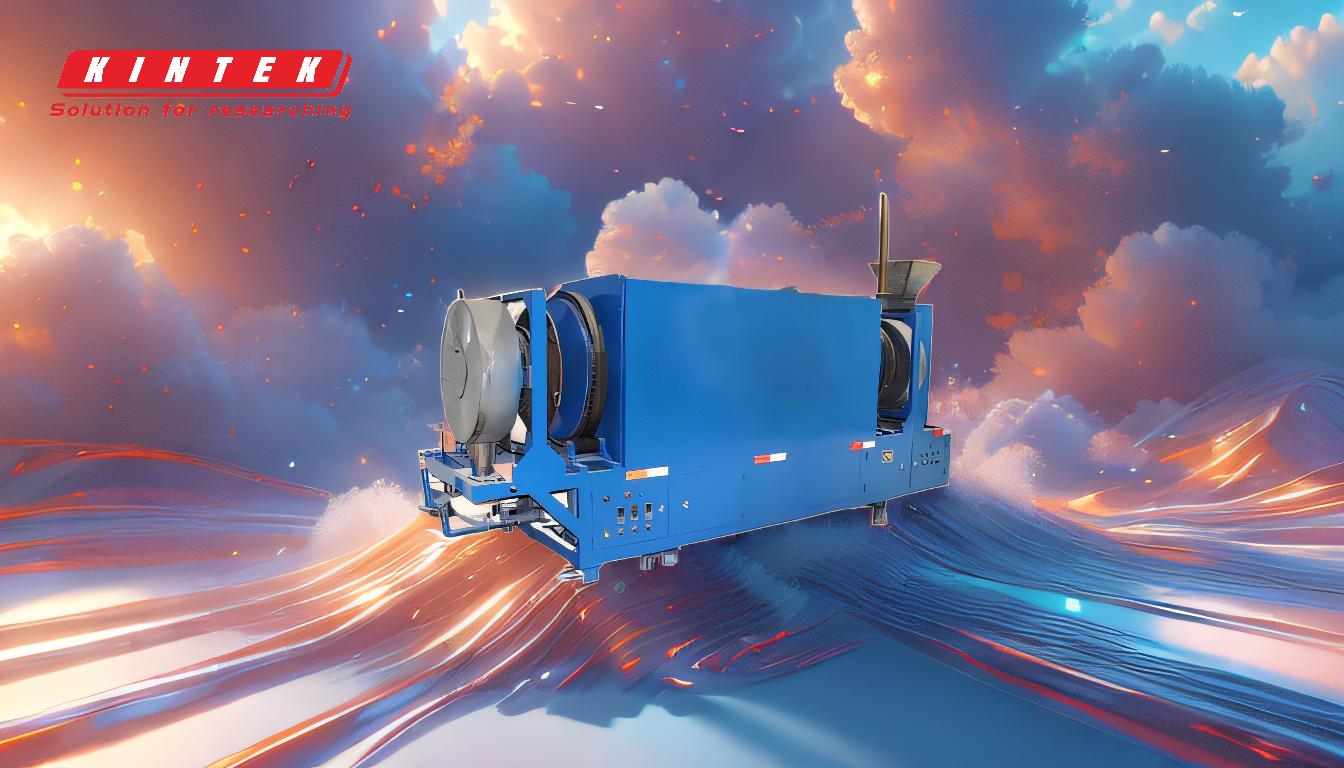The pyrolysis temperature plays a critical role in determining the yield and properties of biochar. At low temperatures (below 450°C) with slow heating rates, biochar is the primary product, characterized by higher yields and specific properties such as carbon content and porosity. As the temperature increases, the yield of biochar decreases, and its properties, such as surface area and stability, are significantly altered. At intermediate temperatures, bio-oil becomes the dominant product, while at high temperatures (above 800°C), gases are the main output. The highest treatment temperature (HTT) is the most influential factor in shaping the final characteristics of biochar, including its chemical composition, surface area, and stability.
Key Points Explained:

-
Effect of Temperature on Biochar Yield:
- At low pyrolysis temperatures (below 450°C), biochar yield is maximized. This is because the biomass undergoes incomplete decomposition, retaining a larger portion of its solid carbon content.
- As the temperature increases, the yield of biochar decreases due to further decomposition of the biomass into gases and bio-oil.
- At high temperatures (above 800°C), the yield of biochar is minimal, and the process primarily produces gases.
-
Impact of Temperature on Biochar Properties:
- Carbon Content: Higher pyrolysis temperatures lead to increased carbon content in biochar due to the loss of volatile compounds and the concentration of carbon-rich structures.
- Surface Area: Biochar produced at higher temperatures generally has a larger surface area, which enhances its adsorption capacity and suitability for applications like water filtration or soil amendment.
- Stability: Biochar produced at higher temperatures is more stable and resistant to microbial degradation, making it suitable for long-term carbon sequestration.
- Porosity: The porosity of biochar increases with temperature, which improves its ability to retain water and nutrients in soil applications.
-
Role of Heating Rate:
- Slow heating rates at low temperatures favor biochar production by allowing more time for the biomass to decompose into solid residues.
- Rapid heating rates at high temperatures promote the formation of gases and bio-oil, reducing the yield of biochar.
-
Influence of Highest Treatment Temperature (HTT):
- HTT is the most significant factor affecting biochar properties. It determines the extent of thermal decomposition and the resulting chemical and physical characteristics of the biochar.
- Higher HTT results in biochar with enhanced properties such as increased surface area, higher carbon content, and greater stability.
-
Trade-offs in Biochar Production:
- While higher temperatures improve certain properties like surface area and stability, they also reduce the overall yield of biochar.
- The choice of pyrolysis temperature depends on the intended application of the biochar. For example, biochar for soil amendment may require a balance between yield and stability, while biochar for adsorption applications may prioritize surface area.
-
Applications of Biochar Based on Temperature:
- Low-temperature biochar (below 450°C) is suitable for applications requiring high carbon retention and nutrient-rich properties, such as soil conditioning.
- High-temperature biochar (above 800°C) is ideal for applications requiring high surface area and stability, such as water filtration or carbon sequestration.
By understanding the effects of pyrolysis temperature on biochar, producers can optimize the process to achieve the desired yield and properties for specific applications. This knowledge is essential for equipment and consumable purchasers to select the appropriate pyrolysis conditions and equipment to meet their needs.
Summary Table:
| Temperature Range | Primary Product | Key Properties | Applications |
|---|---|---|---|
| Below 450°C | Biochar | High yield, high carbon content, moderate porosity | Soil conditioning, nutrient retention |
| 450°C - 800°C | Bio-oil | Reduced biochar yield, increased surface area | Intermediate applications |
| Above 800°C | Gases | Minimal biochar yield, high surface area, high stability | Water filtration, carbon sequestration |
Ready to optimize your biochar production? Contact our experts today for tailored solutions!












